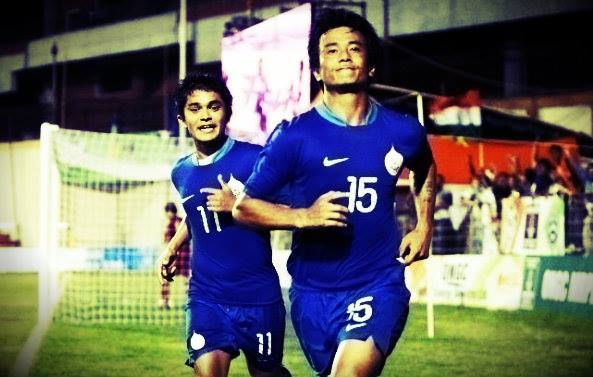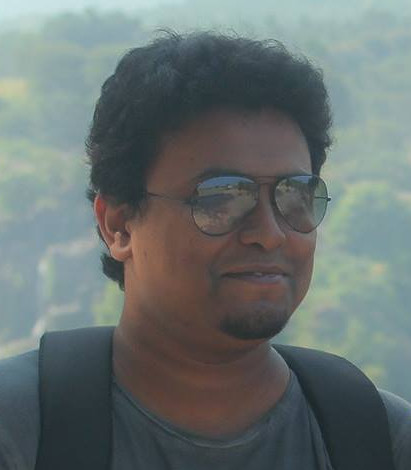Debate: Has Sunil Chhetri surpassed Bhaichung Bhutia as a footballer?

"It had to happen. It's time to move on,” Sunil Chhetri said after Bhaichung Bhutia was omitted from the list of probables for the World Cup qualifiers in 2011.
The veteran striker was at the twilight of his career then, and age was quickly catching up with him. He had played on 16 minutes in 2011 Asian Cup in Qatar, after missing the first two match against Australia and Bahrain due to an injury. Just a couple of months later, he pulled the curtain on the most celebrated football career of the nation.
"There was the era of Vijayan and then the era of Bhutia. These are big shoes to fill. Maybe few years down the line you will ask where Chhetri is," Chhetri added.
Thus is life.
Earlier last month, India took on Iran in their seventh World Cup Qualifier fixture, which they lost 4-0, and Chhetri was missing from the lineup due to a groin injury. He also missed their last qualifier against Turkmenistan. The signs are already there - the Bengaluru FC striker is 31 years old now, and soon the national team will have to look for someone to fill his big shoes. Soon the torch will have to be passed on to someone else.
As Chhetri enters the final phase of a long and illustrious career, parallels will drawn between him and Bhaichung Bhutia. Both were the torchbearers of Indian football in their respective eras, both have played for a host of clubs in India, and outside, yet it started out very differently for both of them.
In the small town of Tinkitam, located in South Sikkim, Bhutia was born to a family of farmers. The Sikkimese Sniper got into football at a very early age, however, his parents were not too thrilled by it. When his father passed away, it was his uncle who encouraged him to pursue his passion, and at the age of nine he received a scholarship from the Sports Authority of India (SAI). He did not look back after that.
Although Chhetri was born in Secunderabad, his roots were not far off from that of Bhutia. Both his parents were Nepalese, and were from a footballing background. While his father played for the Indian Army team, his mother, and her twin sister, had played for the Nepalese national women's team. So unlike Bhutia, encouragement and support from the family members was not an issue for him.
However, it was Chhetri who was not confident of making it big in this sport. Initially, he played football because he thought it might help him get into a good college, nevertheless, he excelled in it.
While Bhaichung started his professional career at East Bengal, Chhetri got his big break at their cross-town rivals Mohun Bagan. In fact Bhutia was playing for the Mariners as well, in the 2002-03 season, when Chhetri signed for them as a youngster. However, it was at JCT where the duo established themselves in their careers. Bhaichung was the top-scorer in the inaugural season of the National Football League in 1996-97 as JCT became the champions, while 10 years later it was Chhetri who top-scored for JCT and helped them to a second-place finish.
It must be remembered that Bhaichung excelled in an era when the concept of a football agent was alien to Indian football, and yet he made it to the foreign shores. He became the first Indian footballer to play professionally in England, when he signed for Manchester-based club Bury in 1999. It was not a successful stint for him personally, yet, it opened up the avenue for other Indian footballers to traverse in the future. Like Chhetri did with MLS club Kansas City Wizards in 2010.
When Chhetri made his debut for the national team in 2005, Bhutia was already an established name in the lineup. The duo played together in the 2007 and 2009 Nehru Cup winning campaign, as well as the 2008 AFC Challenge Cup triumph.
The duo formed a very fruitful partnership in attack for India. In the semi-final of the 2008 AFC Challenge Cup against Myanmar, Chhetri scored the only goal in a 1–0 victory after being assisted by Bhaichung to see India through to the final. Bhutia also scored a goal in the final against Tajikistan, which India won 4–1 thanks to a Sunil Chhetri hat-trick.
As a footballer, Bhaichung was a naturally gifted athlete, while Chhetri had to rely more on his hard-work to improve and hone his skills over the years. Chhetri though, was the more versatile footballer, and he has been used both as a winger and as a midfielder for the national team.
Back in 2013, Chhetri scored his 43rd goal in international football, during a 2-0 win over Nepal in a friendly, and overtook Bhaichung's tally to become the top-scorer for his nation, and with a much better strike rate. The Bengaluru FC skipper has overtaken Bhaichung in international football, however, domestically he still has some catching up to do.
We spoke with three of the most knowledgeable Indian football experts, who have followed the exploits of both Bhaichung and Chhetri closely, and have asked them to answer the question: Has Sunil Chhetri surpassed Bhaichung Bhutia as a player?
Somnath Sengupta (Long-term Mohun Bagan supporter; Former Indian football editor at TheHardTackle)
Sunil Chhetri: At international level, there is little doubt that he is one of the best strikers to ever play for India, if not the very best. Time and again he has delivered for the National team on big occasions, SAFF Finals, AFC Challenge Cup final or AFC Championship game. He is India's all time top scorer in SAFF Cup and statistically, he has the best strike rate among India's top five all-time highest scorers.
Tactically, he is highly versatile. Chhetri wasn't the most naturally talented player when he started his career. But with time he has honed and maximized his ability. He is tactically intelligent and can seamlessly play as a center forward, supporting striker or even on the wings in a 4-3-3. He played a couple of matches for Mohun Bagan under Subrata Bhattacharya in deep midfield and performed exceptionally.
He is a lethal scorer, but rarely selfish. His club record was mediocre at best before joining Bengaluru FC. Since joining BFC it has improved. He was the joint top-scorer in I-League in BFC's debut season. Along with that season and a season in JCT, Chhetri has never quite transferred his International form to domestic front.
Baichung Bhutia: He is India's second highest scorer of all time but his strike rate is pretty modest. He was very good for India in LG Cup and some of the SAFF Cups, and also played a significant role off the bench in the Challenge Cup triumph. But his overall International career was inferior to that of Chhetri or even IM Vijayan.
Tactically, he was significantly more skilled and explosive than Chhetri. He was pacy, had great close control and sharp in the box. Bhutia started off as a winger but mostly played as a center forward or second striker in his career. He did show good ability to combine with strikers like Vijayan, Mike Okoro or Jose Barreto, but he wasn't as tactically intelligent as Chhetri.
His club record is exceptional, and significantly better than Chhetri. Top scorer in first National League, he also held the record for scoring five goals in a single NFL game. He won league titles with both JCT and East Bengal, playing a huge role in both triumphs. At the same time, he is Mohun Bagan's highest scoring Indian player in I-League/NFL history. While Chhetri's record in Kolkata derby is insignificant, Baichung regularly dazzled in Indian football's biggest match. He is the all time top-scorer in the Kolkata derby and has also scored a high profile hat-trick in 1997.
Rahul Bhutani (Indian football editor at TheHardTackle)
Ever since Sunil Chhetri became the highest Indian goal-scorer of all times, there has been a debate on who is better between him and Bhaichung Bhutia - two modern greats of Indian Football. Both players have inspired the Indian team and were the leaders of the team, whenever they played. It is indeed sad that both of them couldn't play a lot together as Bhutia was largely troubled by injuries in later part of his career.
In my personal capacity, I would say that Sunil Chhetri is marginally better than Bhaichung Bhutia. While Bhutia is undoubtedly the more skilful player of the two, Chhetri's hardwork and off-the-ball work rate makes him a better player. This can be gauged by the fact that Chhetri has been fielded on the left flank and in a withdrawn role by the national team coaches so that he can create chances for his teammates, when India has been lacking a creative spark.
Chhetri's performance on the left side of the midfield against Guam after the Blue Tigers were down to 10 men earned him several accolades. In comparison Bhutia had the likes of Climax Lawrence, Reneddy Singh, Jo Paul Ancheri, IM Vijayan, and even Chhetri in the later parts of his career, to create chances for him and support him in the attack. Ever since the likes of Mahesh Gawli, Climax Lawrence and others have retired, Sunil Chhetri has been the only constant in Indian Football and in addition to scoring goals, he has also mentored the development of younger players.
Last year in particular has all been about Chhetri. The Bengaluru FC skipper started off by scoring a brace against Nepal that took India took to the second round of 2018 FIFA World Cup qualifiers. He then went on to score India's only goals in the losses to Oman and Guam in the first two qualifiers, before notching up an assist for Robin Singh' s winner against Guam in the home tie.
Even in the SAFF Championships final against Afghanistan Chhetri notched up the assist for India's equaliser and then went on to score the winner. This given the fact that most of the players who played alongside him in the national team had not even played five international matches.
It seems like a 1-1 tie between Chhetri and Bhutia, but you can have your say as well. Join the debate and let us know your thoughts on this topic in the comment section below.

Comments
Sign up or log in to your account to leave comments and reactions
0 Comments